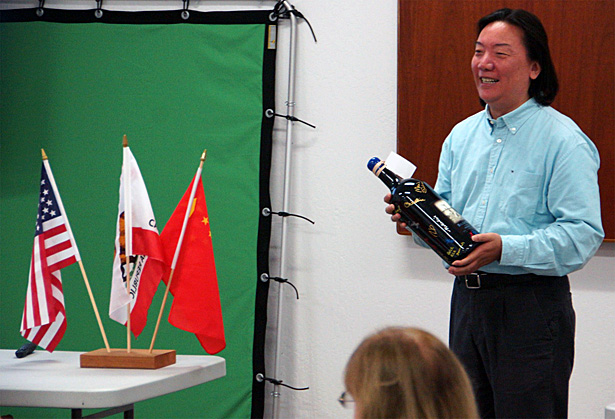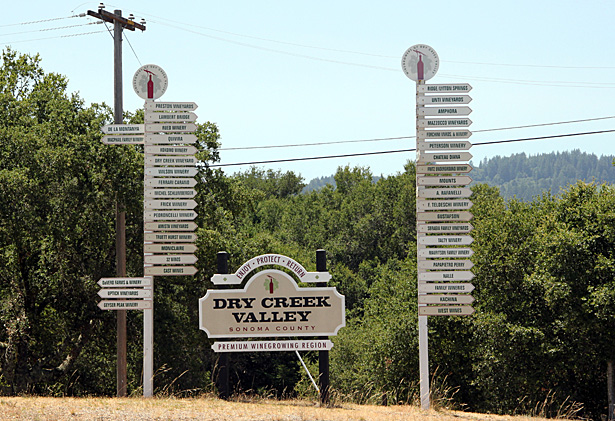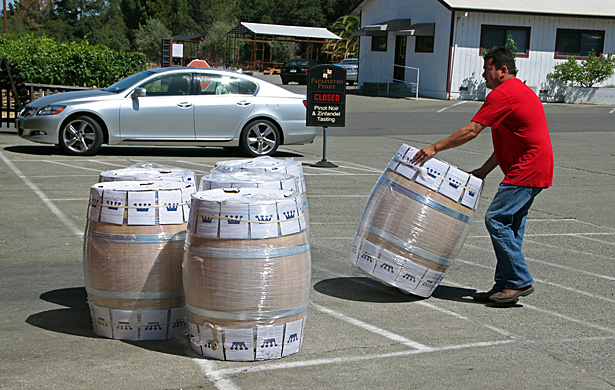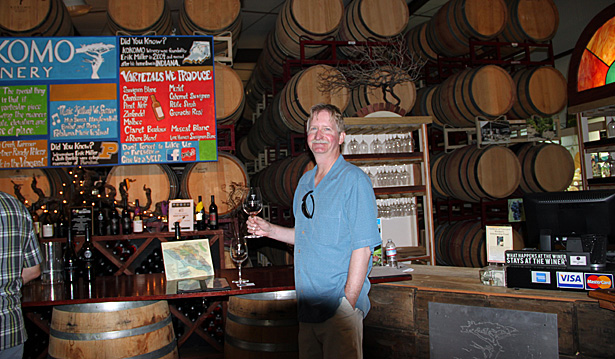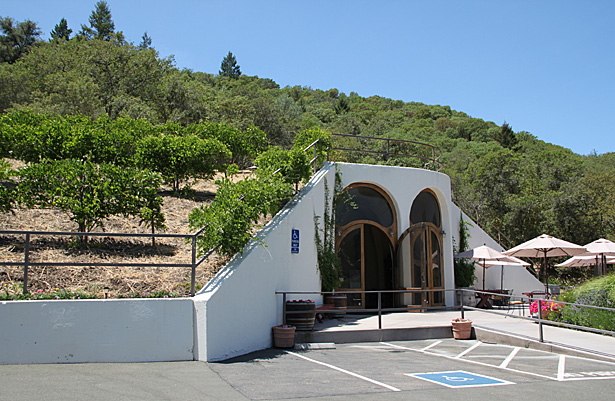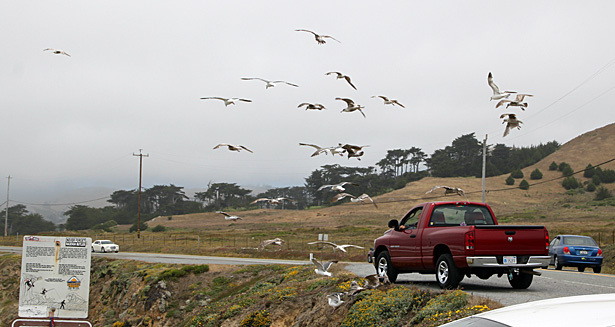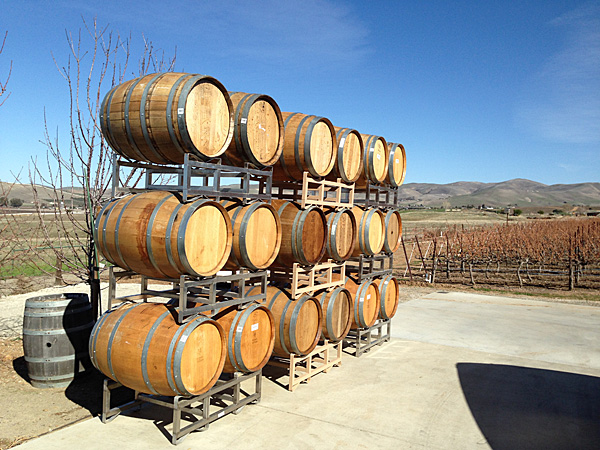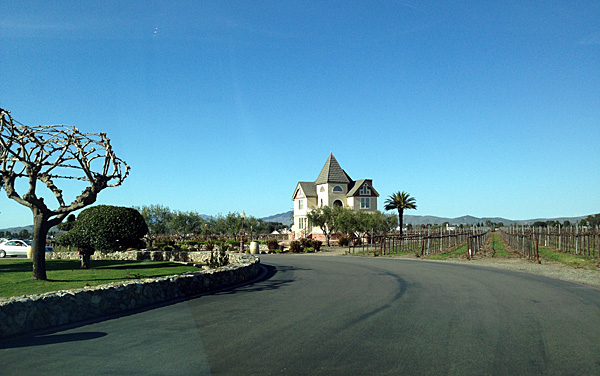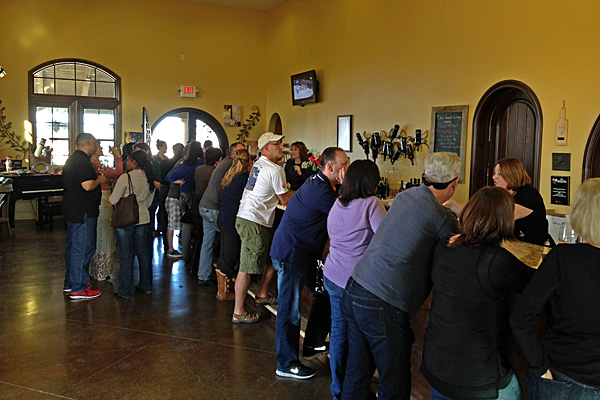Jeroboam was a bull frog
Was a good friend of mine
I never understood a single word he said
But I helped him drink his wine
And he always had some mighty fine wine
Stop the presses! The subject of the 1970’s Three Dog Night song Joy to the World was Jeremiah. Jeroboam is the name of a particular size of wine bottle. Actually, two sizes. But let’s start from the beginning.
Most wine is sold in standard 750 milliliter bottles. There are twelve bottles in a case and a standard sized oak barrel typically yields around 300 bottles. But the 750 isn’t the only game in town. Pictured below, on the right, is a 750 ml bottle of one of my favorites: Alfaro Garys’ Vineyard Pinot Noir. The bottle in the center is a magnum: 1.5 liters, the equivalent of two standard bottles.
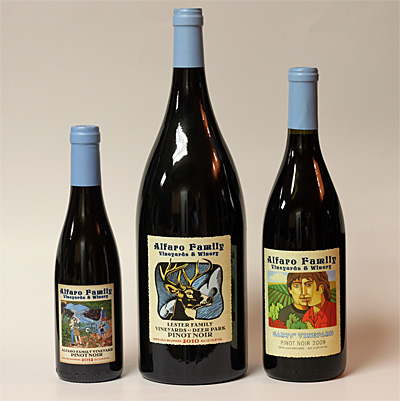
On the left is a 375 ml half bottle of estate Pinot. Don’t call it a split – that term is reserved for 187 ml bottles, which are usually found housing sparkling wines. The half bottle is a convenient size to share with another person at dinner or a picnic without worrying about what to do with leftovers.
The smallest bottle of good wine I’ve had in my possession is the diminutive 100 ml bottle of Leticia Vineyards Arroyo Grande Valley Pinot Noir shown below, on the left. Next to that, for reference, is a standard-sized bottle of Leticia Pinot.
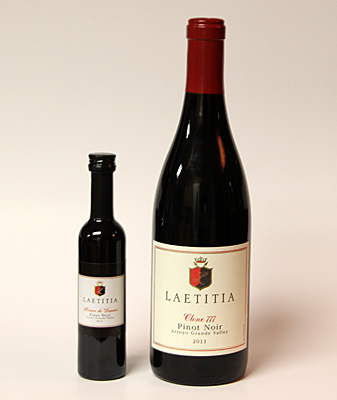
The real fun for most oenophiles is in the big bottles. To paraphrase Virginia Madsen’s memorable line from the film Sideways, anytime you open a magnum is sure to be a special occasion. Large format bottles also last longer in your cellar, and putting a few on a display rack can really spice up the place. But if a mere magnum is not enough, you should proceed to the double magnum, or Jeroboam, the equivalent of four bottles in one.
By convention, at least in France, it is also permissible to call a 4.5 liter bottle of Bordeaux a Jeroboam. Next up, at six liters, the equivalent of eight ordinary bottles, is the Imperial, also known as the Methuselah. Impressive as that may be, a Methuselah is dwarfed by the extremely rare, 12 liter Nebuchadnezzar. If you have it on your bucket list to own, or at least see up close, a Nebuchadnezzar, I can recommend two establishments that have one on display. The Stephen & Walker tasting room on Healdsburg Avenue is just down the street from Willi’s Seafood and Raw Bar. Or you can take the self guided tour at St. Supery in Napa where they have a full range of large format bottles of excellent Napa Cabernet on display upstairs.
Now that we’re on the subject of Bordeaux, we offer for your consideration a modest collection of Bordeaux style bottles: a standard 750 ml on the left, magnum on the right, and a Jeroboam anchoring the line at center.
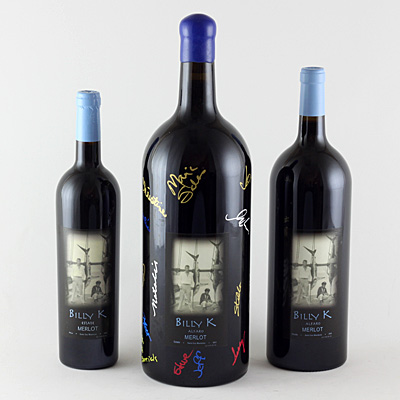
This particular Jeroboam is covered in colorful writing because it was a gift from Applied Motion Products to wine connoisseur James Chang, the president of our parent company, Shanghai Moons’. Local vintner Alfaro Family Vineyards hosted a special reception for Applied Motion and Moons’ managers last January, but James was out of the country. When he visited in August, we brought Alfaro to him in the form of a Jeroboam of Billy K Merlot, signed by the Applied Motion crew. He seems to like it.
